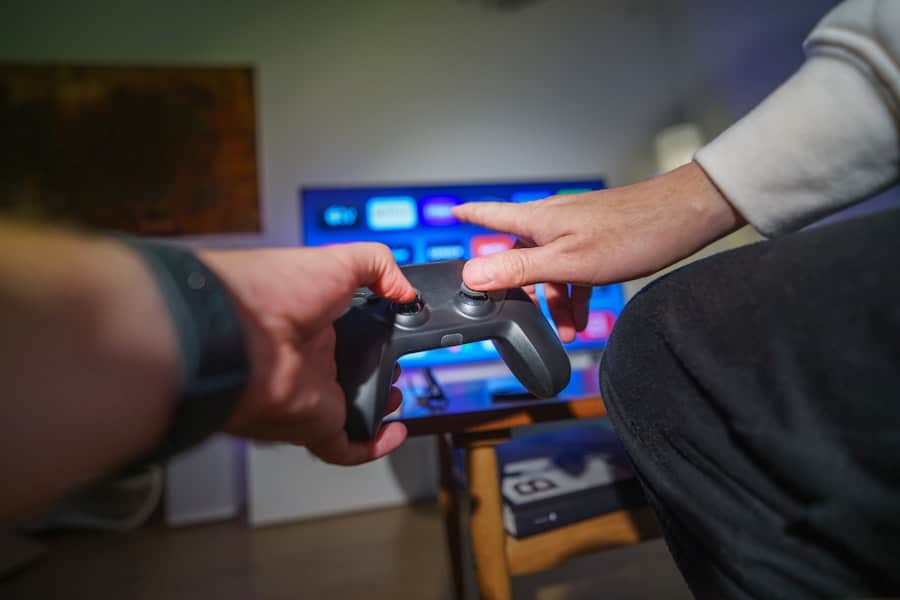Virtual Reality (VR) has emerged as a transformative technology in various sectors, and its application in employee training is particularly noteworthy. By immersing employees in simulated environments, VR offers a unique platform for experiential learning that traditional training methods often lack. This technology allows employees to engage with their training material in a more interactive and engaging manner, which can lead to improved retention of information and skills.
The immersive nature of VR can replicate real-world scenarios, enabling employees to practice and hone their skills in a safe environment without the risks associated with on-the-job training. The integration of VR into employee training programs is not merely a trend; it represents a significant shift in how organizations approach workforce development. Companies are increasingly recognizing that conventional training methods, such as lectures or e-learning modules, may not adequately prepare employees for the complexities of their roles.
VR provides a solution by allowing for hands-on experience and immediate feedback, which are critical components of effective learning. As organizations strive to enhance productivity and employee satisfaction, the adoption of VR in training programs is becoming more prevalent, paving the way for innovative learning experiences.
Key Takeaways
- VR in employee training provides immersive and interactive learning experiences
- Gamification in employee training increases engagement, motivation, and knowledge retention
- VR enhances gamification by creating realistic simulations and interactive scenarios
- Successful case studies show improved learning outcomes and employee performance with VR gamification
- Best practices for implementing VR gamification include clear learning objectives and feedback mechanisms
The Benefits of Gamification in Employee Training
Gamification, the application of game-design elements in non-game contexts, has gained traction as a powerful tool in employee training. By incorporating elements such as points, badges, leaderboards, and challenges, gamification can significantly enhance engagement and motivation among employees. One of the primary benefits of gamification is its ability to transform mundane training tasks into enjoyable experiences.
When employees are motivated by game-like elements, they are more likely to participate actively in their training, leading to better learning outcomes. Moreover, gamification fosters a sense of competition and achievement among employees. This competitive spirit can drive individuals to push their limits and strive for excellence.
For instance, when employees see their progress reflected on a leaderboard, they may be inspired to improve their performance to climb higher in the rankings. Additionally, gamified training often includes immediate feedback mechanisms, allowing employees to understand their strengths and areas for improvement in real-time. This instant feedback loop is crucial for reinforcing learning and encouraging continuous development.
The Role of VR in Enhancing Gamification

The intersection of VR and gamification creates a powerful synergy that can revolutionize employee training. While gamification alone can enhance engagement through competition and rewards, VR takes this experience to another level by immersing employees in lifelike scenarios that require active participation. In a VR environment, gamified elements can be seamlessly integrated into realistic simulations, making the learning experience not only more engaging but also more relevant to the employee’s actual job responsibilities.
For example, consider a VR training program designed for customer service representatives. In this scenario, employees can interact with virtual customers in various situations that mimic real-life challenges they may face on the job. By incorporating gamified elements such as scoring systems for successful interactions or rewards for handling difficult customers effectively, employees are encouraged to apply their skills in a dynamic setting.
This combination of VR and gamification not only enhances engagement but also allows for deeper learning through practice and repetition in a controlled environment.
Case Studies of Successful VR Gamification in Employee Training
Several organizations have successfully implemented VR gamification in their employee training programs, yielding impressive results. One notable example is Walmart, which introduced VR training to prepare its employees for Black Friday sales events. The company developed a VR simulation that allowed employees to experience the chaos of a busy store during peak shopping hours.
By gamifying this experience—offering points for successfully managing customer interactions and completing tasks—Walmart was able to enhance employee preparedness and confidence.
Another compelling case is that of Boeing, which utilized VR technology to train its technicians on complex assembly processes.
By creating immersive simulations that incorporated gamified elements such as time challenges and skill assessments, Boeing was able to reduce training time significantly while increasing knowledge retention among its workforce. Technicians could practice intricate tasks repeatedly in a risk-free environment, leading to higher accuracy and efficiency on the production line. This case illustrates how VR gamification not only enhances learning outcomes but also contributes to operational efficiency within organizations.
Best Practices for Implementing VR Gamification in Employee Training
To maximize the effectiveness of VR gamification in employee training, organizations should adhere to several best practices. First and foremost, it is essential to align the training objectives with the specific needs of the workforce. Understanding the skills gaps and challenges faced by employees will help tailor the VR experience to address these areas effectively.
Conducting thorough needs assessments can provide valuable insights into what employees require from their training programs.
The technology should be intuitive and accessible, ensuring that employees can navigate the virtual environment with ease.
Incorporating feedback from employees during the development phase can help identify potential usability issues and enhance overall engagement. Furthermore, it is crucial to provide adequate support and resources for employees as they transition into using VR technology for training purposes.
Overcoming Challenges in VR Gamification for Employee Training

Despite its numerous advantages, implementing VR gamification in employee training is not without challenges. One significant hurdle is the initial cost associated with developing and deploying VR training programs. Organizations must invest in hardware, software, and content creation, which can be a barrier for smaller companies or those with limited budgets.
To mitigate this challenge, organizations can explore partnerships with technology providers or consider off-the-shelf solutions that offer customizable features. Another challenge lies in ensuring that employees are comfortable with using VR technology. Some individuals may experience discomfort or motion sickness when using VR headsets, which can hinder their ability to engage fully with the training material.
To address this issue, organizations should provide comprehensive training on how to use the technology effectively and offer alternative options for those who may struggle with VR experiences. Gradually introducing employees to VR through short sessions can also help acclimate them to the technology before diving into more complex simulations.
The Future of VR and Gamification in Employee Training
As technology continues to evolve, the future of VR and gamification in employee training looks promising. Advancements in hardware will likely lead to more affordable and user-friendly devices, making it easier for organizations to adopt these technologies on a larger scale. Additionally, improvements in software capabilities will enable the creation of even more sophisticated simulations that can adapt to individual learning styles and preferences.
Moreover, the integration of artificial intelligence (AI) into VR training programs could further enhance personalization and effectiveness. AI algorithms could analyze employee performance data in real-time, adjusting the difficulty level of challenges or providing tailored feedback based on individual progress. This level of customization would ensure that each employee receives a unique learning experience that caters specifically to their needs.
The Impact of VR on Employee Training and Gamification
The impact of Virtual Reality on employee training is profound, particularly when combined with gamification strategies. By creating immersive learning experiences that engage employees on multiple levels, organizations can foster a culture of continuous improvement and skill development. As companies navigate an increasingly complex business landscape, leveraging innovative technologies like VR will be essential for staying competitive and ensuring that their workforce is well-prepared for future challenges.
In summary, the integration of VR into employee training programs represents a significant advancement in how organizations approach workforce development. By harnessing the power of gamification within these immersive environments, companies can create engaging and effective training experiences that not only enhance knowledge retention but also drive employee motivation and satisfaction. As we look ahead, it is clear that the future of employee training will be shaped by these technologies, paving the way for more dynamic and impactful learning opportunities across industries.
A related article to How VR Improves Gamification in Employee Training can be found on TechRepublic, which helps IT decision-makers identify technologies that can enhance their business operations. This article provides valuable insights into the latest tech trends and innovations that can be utilized in various industries, including employee training. To learn more about the technologies that can benefit your organization, check out the article here.
FAQs
What is VR?
VR stands for virtual reality, which is a computer-generated simulation of an environment that can be interacted with in a seemingly real or physical way by a person using special electronic equipment, such as a helmet with a screen inside or gloves fitted with sensors.
What is gamification?
Gamification is the application of game-design elements and game principles in non-game contexts to engage and motivate people to achieve their goals.
How does VR improve gamification in employee training?
VR improves gamification in employee training by providing a more immersive and interactive learning experience. It allows employees to practice real-life scenarios in a safe and controlled environment, leading to better retention and application of knowledge.
What are the benefits of using VR in employee training?
The benefits of using VR in employee training include increased engagement, better retention of information, the ability to practice real-life scenarios, and the opportunity for personalized and adaptive learning experiences.
Are there any drawbacks to using VR in employee training?
Some drawbacks of using VR in employee training include the initial cost of equipment and development, the need for technical support and maintenance, and the potential for motion sickness or discomfort in some users.

